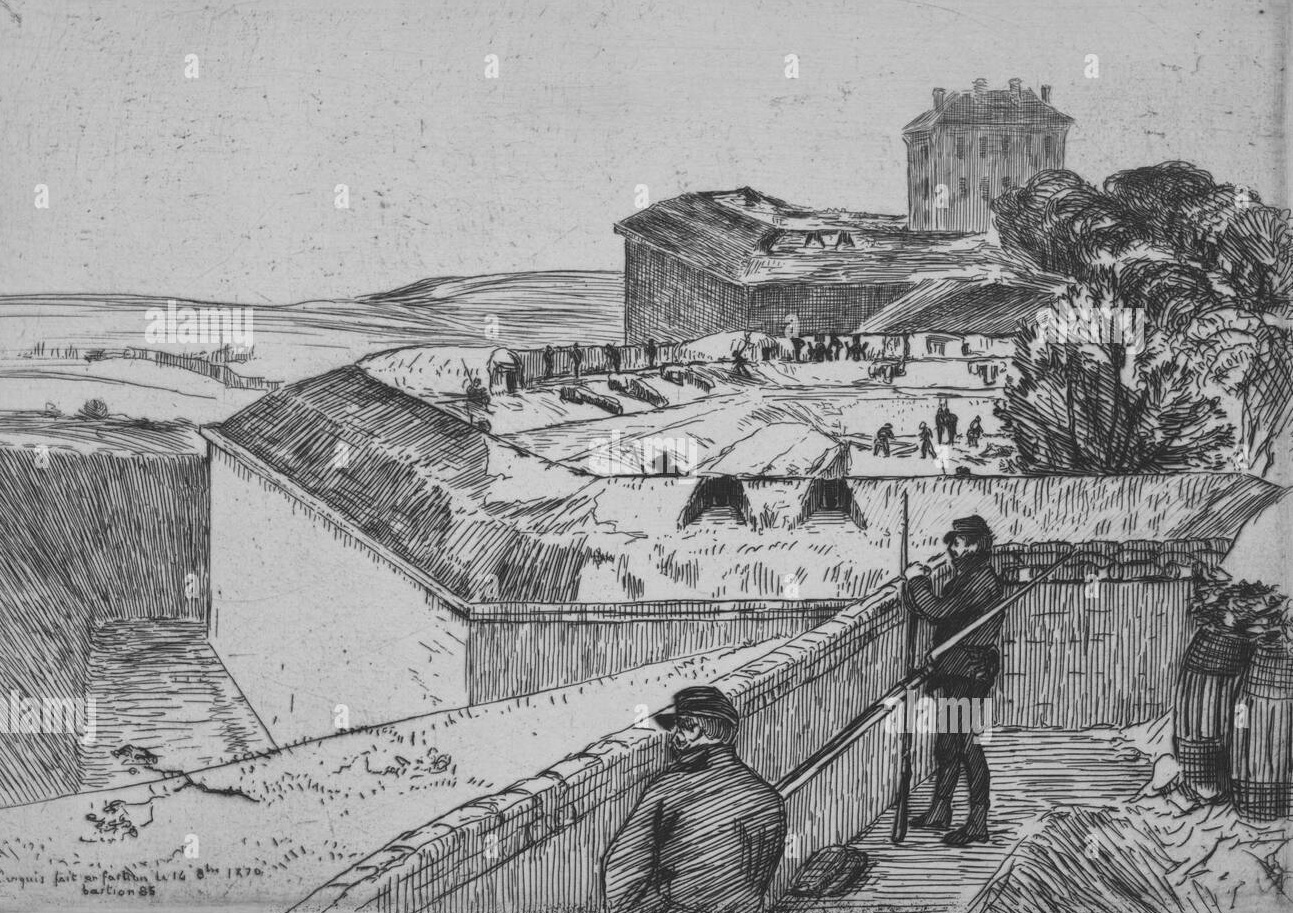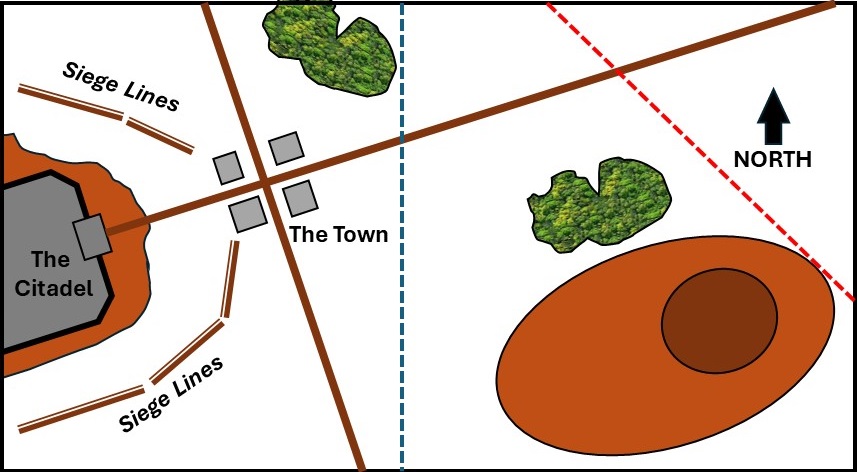Relieving the Citadel, 1871
A Republican-Phase Scenario for La Guerre à Outrance


After the fall of Sedan in 1870, the Prussians and their allies went on to lay siege to many of the cities and towns in France where the French - now again a republic - still held out. The French were quick to raise new armies: building on the depot battalions and those troops which had escaped the fall of the Second Empire, they raised the Garde Nationale, recalled troops from Algeria, and accepted the help of volunteers like the Papal Zouaves (the "Volontaires de l'Ouest") and the followers of Garibaldi. With hundreds of thousands of soldiers in the field, they attempted to raise not only the siege of Paris, but also of many other strongholds.
This scenario is a fictional one, based on several different actions, at Metz, Belmont, Perrone, and many other places where the Prussians were faced with a garrison inside a besieged city on one side, and a field army on the other. (I was impressed with the fortress at Bitche, which I visited some years ago. A Medieval fortification proved to be sufficient proof against even the Prussian's Krupp guns - it held out until the very end of the war, being one of the few besieged places which were never taken by the invaders. The 19th-Century population lived inside the ancient, dank tunnels of a crumbling castle for many months, a real disconnect from how we usually think of such things.)
Here, a sizeable force of Republican French attempts to force the withdrawal of the besiegers of an old fortress. Such actions could have tens of thousands of participants on a side, and had both a massive effect on the morale of the opposing forces, and also led directly to the ultimate failure of the Republican armies (especially in the East). It is a nice change of pace from the Imperial phase, where the Prussians are generally on the attack - historically, not only were the French by definition the aggressors in such battles, but they often made much better use of their artillery than earlier in the war, despite the shortcoming of that arm in the Republican service. While the French generally had insufficient numbers of cavalry during this phase of the war, the Prussians concentrated theirs in the mobile formations sent to pursue the Republican field armies, and so often fought without their usual compliment.
The table below is 5' x 8' (double-size for 28mm figures). The citadel is an old medieval castle, and it acts as a Fortification for troops inside it (they may also choose not to expose themselves by withdrawing into the interior. Assault on the castle walls are not permitted - only on the front gate. The hill to the south is rough and provides soft cover (it is wooded). The town provides hard cover for up to a single unit deployed in it - others may only pass through. The woods are rough and provide soft cover. the Prussian siege lines will provide hard cover to units inside them, but only from fire or assaults coming from the direction of the Citadel.

Prussian forces will set up anywhere to the west of the blue dotted line, but no closer to the Citadel trhan their siege lines. The French garrison forces set up inside the Citadel. Other French forces set up to the north-east of the red dottted line, or may move onto the table from the edges in the northeast corner, behind it.
General Lavatiere
2 Brigades Line Infantry
2 Bases Artillery (2 single-base units)
19th Corps: General Malmaison
1st Division: General LaFranc
2 Brigades Line Infantry
1 Base Artillery
2nd Division: General de Valette
2 Brigades Line Infantry
1 Base Artillery
Cavalry Division: General Duquesne
1 4-Base Brigade Chasseurs de Marche (Mobilisé Cavalry)
1 4-Base Brigade Chasseurs d'Afrique (Line Cavalry)
21st Corps: General Trouchon
1st Division: General Maisbois
1 Brigade Volontaires de l'Ouest (French Guard Infantry)
1 Brigade Garde Mobile (Mobilisé Infantry)
1 Base Artillery
Division Africain: General Tourville
1 Brigade Turcos (French Guard Infantry)
1 Brigade Zouaves (French Guard Infantry)
1 Base Artillery
1 Base Corps Artillery
23rd Corps: General Steiger
4th Bavarian Division: General Kielmann
2 Brigades Line Infantry
1 2-Base Uhlan Regiment (Line Cavalry)
1 2-Base Artillery (1 Unit)
5th Rhineland Division: General Thurstalle
2 Brigades Line Infantry
1 2-Base Artillery (1 Unit)
6th Rhineland Division: General Mueller
2 Brigades Line Infantry
1 2-Base Artillery (1 Unit)
24rd Corps: Prinz Frederich von Luxembourg
7th Thuringer Division: General Kellermann
2 Brigades Line Infantry
1 2-Base Artillery (1 Unit)
8th Thuringer Division: General Willitz
2 Brigades Line Infantry
1 2-Base Artillery (1 Unit)
1 4-Base Cavalry Brigade (Line Cavalry)
The game can last no more than 10 turns.
To win, the French must either break the Prussian forces, lifting the siege, or must get at least 3 of the units in the Citadel to join the main body of the Armee de la Centre (that is, no longer separated by the Prussian siege lines). The Prussians must prevent this from happening. To break the opposing army, at least a third of its component units must be either destroyed or demoralized at the end of any game turn. For the French, this requires 7 units, for the Prussians, only 6.